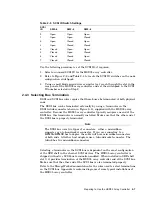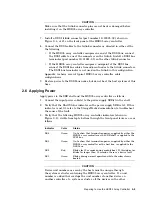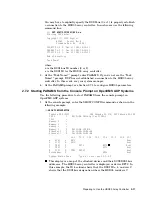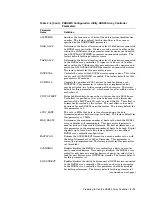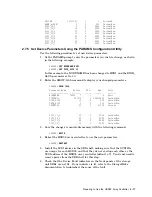
3
Operating the HSD05 Array Controller
This chapter contains procedures used in the everyday operation of the HSD05
array controller, including how to run the onboard utilities, troubleshooting
procedures, and a remove and replace procedure for the HSD05 array controller.
CAUTION
Whenever a host on a DSSI bus containing an HSD05 array controller
is rebooted, Digital recommends that the HSD05 array controller is also
reset to ensure consistent reporting of HSD05-served devices to the host.
This can be accomplished by issuing a ‘‘restart’’ command in the PARAMS
configuration utility, or simply by removing and restoring power to the
HSD05-served shelf.
3.1 HSD05 Device Utilities
The HSD05 onboard utilities (UTILIT) allow you to monitor, format, qualify, and
exercise SCSI devices from the OpenVMS operating system. The onboard utilities
are accessed through the diagnostic and utility protocol (DUP) server, either
through the system console or from the OpenVMS prompt.
In this chapter, user input is shown in
boldface
type in the examples.
CAUTION
The HSD05 array controller returns a limited set of device type
identification names to the host. All attached tape drives are identified
as TU81 (MUAxxx). All attached disk drives are normally identified as
RF72 (DIAxxx); this can be changed to identification as RA82 (DUAxxx)
by setting the HSD05 parameter DEVICE_TYPE to 0. These device types
as reported to the host do not affect actual accessible device storage space.
Due to device geometry differences, a disk drive served by the HSD05
array controller cannot be part of a shadow set with true RF72, or any
other DSSI disk drives. Shadow sets using HSD05 array controller-served
disk drives must be of the same SCSI device type; for example, RZ26,
RZ26L, or RZ28 disk drives.
Operating the HSD05 Array Controller 3–1



